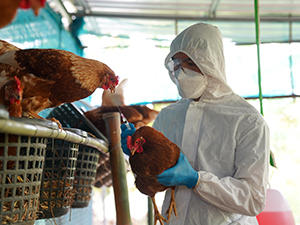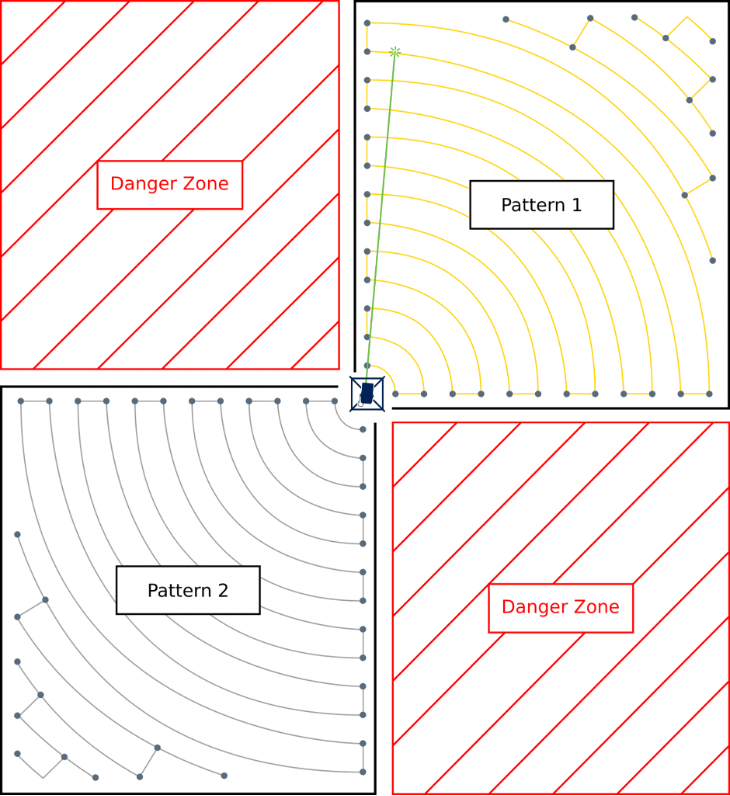Prevent the Spread of Bird Flu in Domestic Flocks & Dairy Cattle with Automated Bird Lasers: Frequently Asked Questions
Oct 28, 2024
Reported cases of highly pathogenic avian influenza (HPAI), commonly known as bird flu, have increased over 140% since we reported on the topic a year ago. Since the beginning of the outbreak in early 2022, bird flu has been detected on nearly 1,200 backyard and commercial poultry farms across 48 states. Globally, the outbreak has killed millions of wild and domestic birds. The illness has also spread to mammals, including dairy cattle; 14 states are currently dealing with bird flu outbreaks among dairy cows.
Due to the widespread nature of the outbreak and the flu’s high mortality rate, many poultry and livestock farms have implemented more robust biosecurity measures. As an environmental services company that helps business across the agriculture supply chain — from farms to production and processing facilities – manage nuisance bird issues, Wild Goose Chase Indy (WGC Indy) frequently receives questions about which deterrence solutions most effectively prevent the spread of the flu.
Below are answers to the questions we are asked most commonly about bird flu – including how automated lasers can help protect poultry farms and dairies from wild birds.
How has the bird flu affected the poultry industry?
Because this variation of bird flu is highly pathogenic, even one confirmed case on a poultry farm necessitates culling an entire infected or potentially exposed flock. In mid-October, the positive detection of bird flu in a flock in Utah resulted in 1.8 million layers being depopulated. While this approach helps to prevent the spread of bird flu, it has immediate, negative economic consequences for producers.
Which animals are most at risk of contracting bird flu?
Domesticated flocks (chickens, turkeys, ducks, etc.), egg laying hens, and dairy cattle have been most affected by bird flu.
How does bird flu spread?
Bird flu spreads through direct contact with infected waterfowl or other infected domesticated animals, or through contact with contaminated feed or surfaces. Wild birds continue to be the primary source of bird flu transmission.
What is an automated bird laser & how does it work?
Automated bird lasers use a laser beam with an extensive range to harass and deter nuisance birds on an ad hoc, seasonal or continuous basis. Automated lasers enable directed harassment in nuisance bird problem areas but are humane and do not interfere with the environment or normal property uses. Lasers are customizable and can be programed to run at different times and intervals and in various patterns.
How do automated bird lasers enhance biosecurity?
The USDA’s Defend the Flock Resource Center outlines best practices to enhance biosecurity, which include but are not limited to:
- Protect against wild birds
- Establish a perimeter buffer area
- Use a line of separation
An automated bird laser is an effective tool that protects domesticated flocks (and dairies) from wild birds by creating a virtual perimeter buffer area or line of separation covered by the laser.

Why do automated lasers work on birds?
Laser beams are highly visible to birds in all light conditions. Birds perceive the beam of a laser as a physical threat – though it poses no actual harm. When approached by the laser beam, individual birds and flocks are startled into flight. Automated bird lasers, like the AVIX Mark II, are specifically designed for birds based upon their biology and are highly effective at deterring nuisance birds because:
- Birds can see the entire laser beam, even in full daylight conditions
- Birds are visually attuned to motion
- Birds are adept at recognizing consistent patterns
How many acres can an automated bird laser cover?
Depending upon the specific nuisance bird species that are affecting your flock or cattle, an automated bird laser is capable of covering approximately:
- 5 to 10 acres for smaller birds such as starlings and sparrows
- 100+ acres for larger migratory birds, such as Canada geese and snow geese
Protect Your Flock or Herd from Bird Flu with Wild Goose Chase Indy
The current bird flu outbreak has wreaked havoc on poultry and livestock farms – but automated lasers can help prevent further damage. Since the 2015 bird flu outbreak, the WGC Indy team has helped hundreds of egg producers, dairies and other farmers protect their poultry and livestock from disease-carrying wild birds with enhanced biosecurity measures.
For more information about automated lasers and other nuisance bird deterrence solutions, or to schedule a site evaluation, contact us.


 0
0
